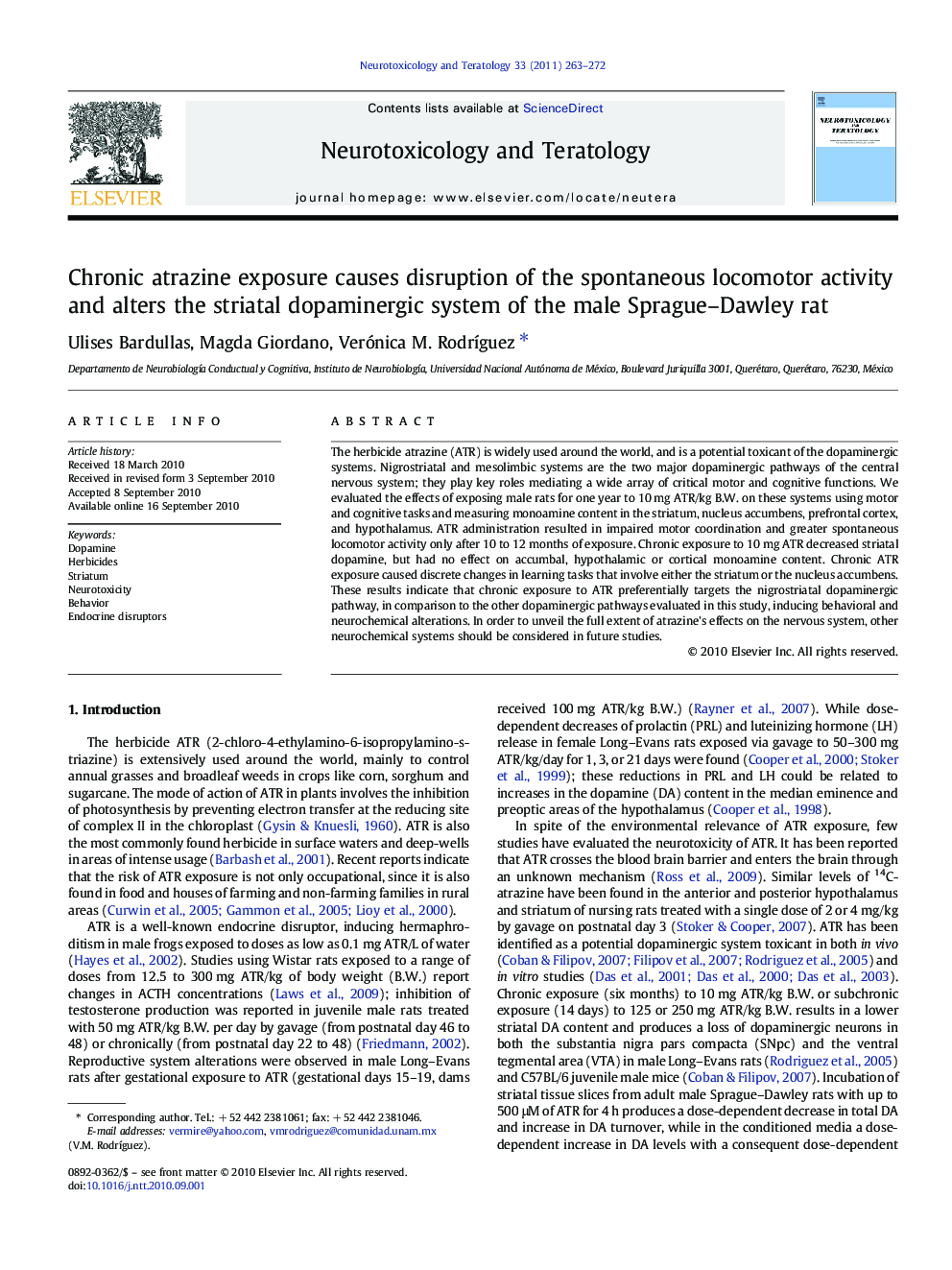| Article ID | Journal | Published Year | Pages | File Type |
|---|---|---|---|---|
| 2591631 | Neurotoxicology and Teratology | 2011 | 10 Pages |
The herbicide atrazine (ATR) is widely used around the world, and is a potential toxicant of the dopaminergic systems. Nigrostriatal and mesolimbic systems are the two major dopaminergic pathways of the central nervous system; they play key roles mediating a wide array of critical motor and cognitive functions. We evaluated the effects of exposing male rats for one year to 10 mg ATR/kg B.W. on these systems using motor and cognitive tasks and measuring monoamine content in the striatum, nucleus accumbens, prefrontal cortex, and hypothalamus. ATR administration resulted in impaired motor coordination and greater spontaneous locomotor activity only after 10 to 12 months of exposure. Chronic exposure to 10 mg ATR decreased striatal dopamine, but had no effect on accumbal, hypothalamic or cortical monoamine content. Chronic ATR exposure caused discrete changes in learning tasks that involve either the striatum or the nucleus accumbens. These results indicate that chronic exposure to ATR preferentially targets the nigrostriatal dopaminergic pathway, in comparison to the other dopaminergic pathways evaluated in this study, inducing behavioral and neurochemical alterations. In order to unveil the full extent of atrazine's effects on the nervous system, other neurochemical systems should be considered in future studies.
